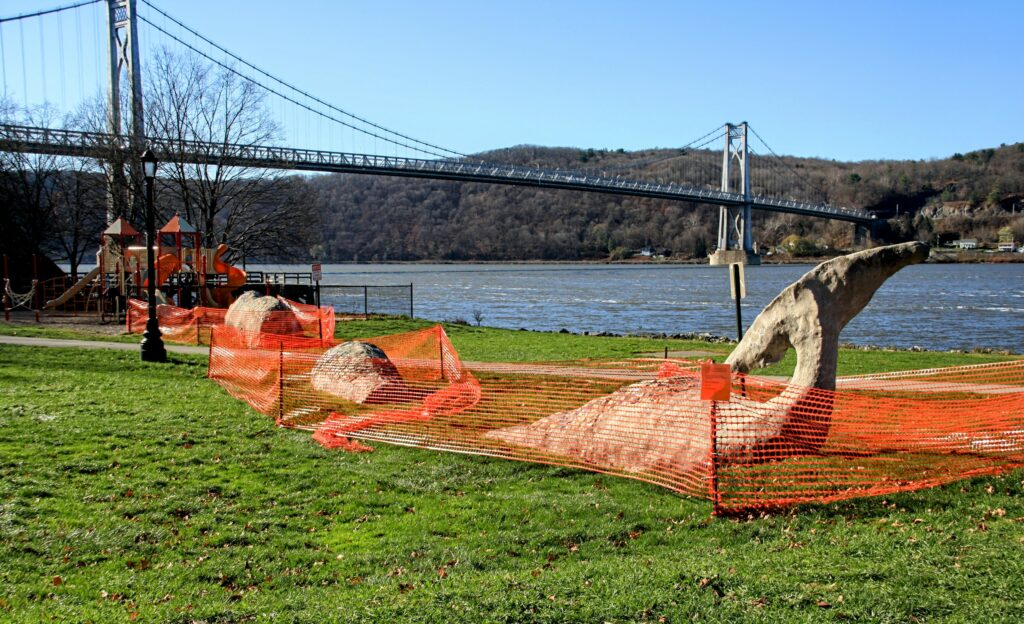POUGHKEEPSIE – The “Waryas Whale” sculpture that has resided on the east shore of the Hudson River in Waryas Park for 20 years is being set free. The sculpture, designed by artist Judy Sigunick, is approximately 62 feet long and was a community project as a tribute to the whaling industry that thrived along the Hudson River.
The three sections of the Sperm Whale consist of a stainless steel skeleton covered in masonry, chicken wire, another layer of masonry, and decorative tiles. Having been exposed to the elements at Waryas Park for two decades, with no continuous maintenance, the whale was degrading and becoming unsafe for children to climb on.
City Administrator Marc Nelson has worked with the Poughkeepsie Public Arts Commission (PAC) for more than a year to address the safety concerns of the Waryas Whale. “More than a year ago we launched a review to determine what repairs were needed and whether it could be saved,” Nelson said, adding “The City hadn’t maintained it during the down years, and obviously its exposure to the elements along the waterfront took its toll over the years.” Nelson noted that the protruding metal pieces created a risk to children and it became a paramount concern.
Using a small American Rescue Plan Act grant, Nelson tasked the PAC, led by Jeff Aman, to explore all the options. Mr. Aman put together a panel of experts, including some with ties to the family of the deceased artist to discuss possible solutions. “With an extraordinary group of collaborators, discussion at multiple public meetings of the arts commission, and the results of the engineering study, it was determined that the Whale must be decommissioned,” Nelson said.
One of the commission’s findings revealed that the cost of restoring the Waryas Whale would be expensive. Aman said “The cost to fully restore the entire sculpture, saving as much of the original creation as possible, would cost at least $140,000 just to stabilize all three elements of the sculpture to a point where they could potentially last decades.” The cost, according to Aman, “does not include any work required to put back the student decorative tiles, nor does it include the additional cost of adding signage that was originally envisioned by the artist.” The costly work did not guarantee that the sculpture would not be destroyed while attempting to lift it up and place it on a new set of footings.
An in-depth history of the Waryas Whale, from inception to its current state, including the recommendations of the committee, can be found here.








